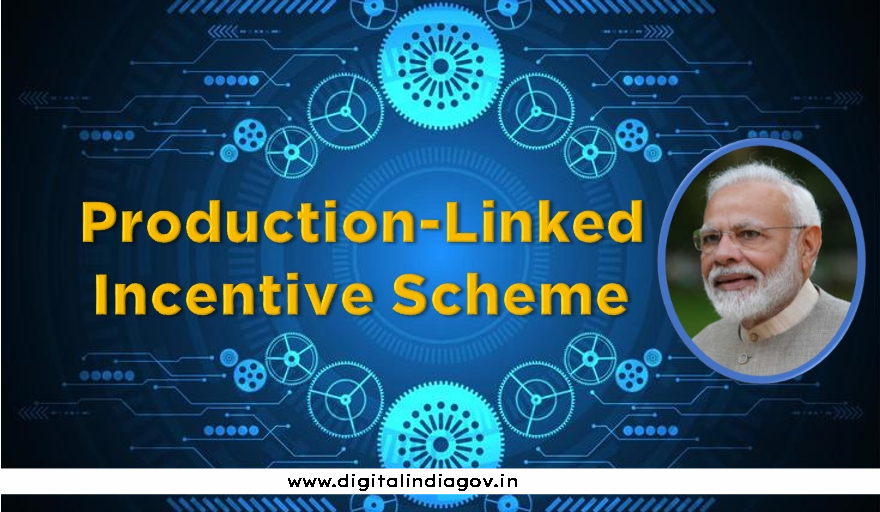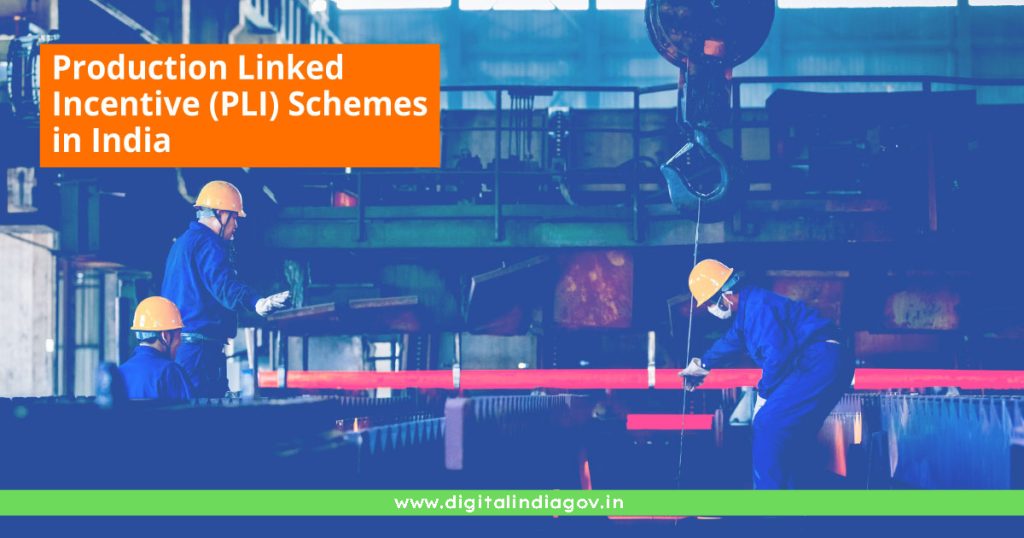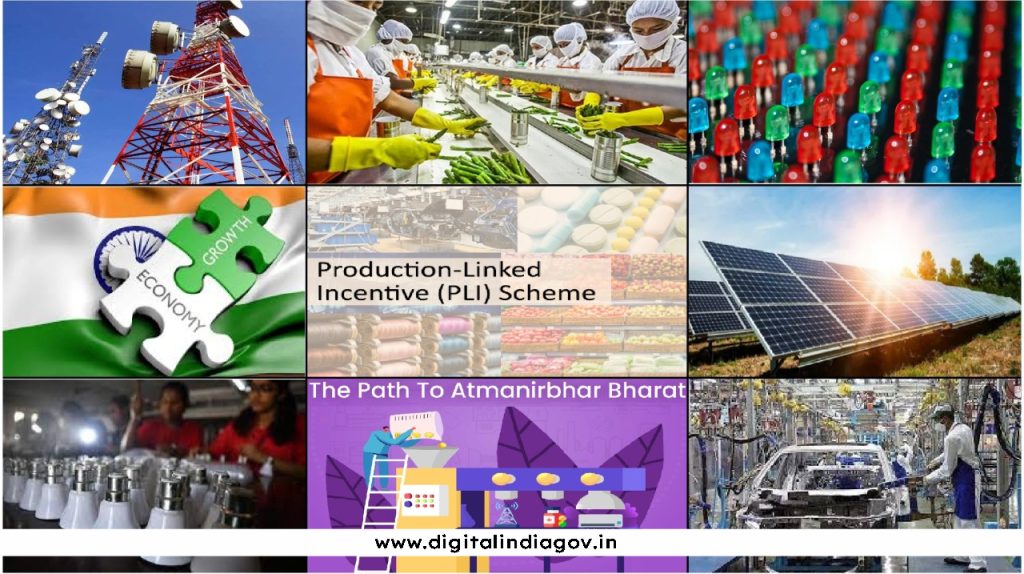Production Linked Incentive Scheme:- In an effort to increase domestic output and lessen the country’s reliance on imports, the Indian government introduced the output Linked Incentive (PLI) program in March 2020. The government offers incentives to Indian enterprises through the PLI system, which is contingent on the sales of their products.
Contents
Current Information on the Production-Linked Incentive Programme
To help the textile industry compete on a global basis with major exporting nations like China and Vietnam, the Central Government has assessed the second phase of the Production Linked Incentive program (PLI 2.0). The Union Minister for Textiles, Commerce, and Industry directed ministry officials to conduct a comprehensive inquiry in November 2024 before determining the final parameters of PLI 2.0.
A Production-Linked Incentive Scheme: What Is It?
The PLI program was launched in response to the Make in India effort and the Atmanirbhar Bharat campaign in India. Its objective is to increase employment and domestic manufacturing capacity while simultaneously enhancing import substitution. The Production Linked Incentive (PLI) Scheme’s original aims were the following three industries:
- Electrical Component Manufacturing
- Mobile and Mobile Accessories Manufacturing
- Medical Devices

Also Read:- PFMS Scholarship
Launch
In April 2020, the central government introduced the PLI initiative, which aims to facilitate large-scale electronics production in India. However, by the end of October 2022, it had been extended to 13 other critical industries.
Controlling Ministries and Implementing bodies involved
Across India, the relevant ministries and departments administer the Production Linked Incentive (PLI) Scheme.
Objectives of the Production Linked Incentive Scheme
The Production Linked Incentive (PLI) program’s main goal is to give businesses rewards for generating additional sales of products made domestically.
In addition, the Production Linked Incentive (PLI) program aims to accomplish the following:
- Create 60 lakh new work opportunities.
- Growing exports from India
- Lowering import bills.
- Expand the scale of the domestic economy.
- to entice outside investment in state-of-the-art technology.
- Over the following five years, increase additional production by thirty lakh crore.
- Increase options for off-farm work.
Sectors Covered under the Production Linked Incentive Scheme
The Production Linked Incentive (PLI) Scheme now encompasses 14 key industries. Under several categories, including the following, the government would give Indian manufacturing enterprises a total incentive of 1.97 lakh crores:
PLI Scheme for the Auto Sector
Facts regarding the Production Linked Incentive (PLI) Scheme for the Auto Sector (PLI-Auto) are as follows:
- In the auto and auto component industries, the Union Government launched the Production-Linked Incentive (PLI) Scheme in March 2022.
- The PLI scheme will cost the automotive industry 25,938 crore, and the auto component industry suggests financial incentives of up to 18% to encourage home production of high-tech automotive parts.
- Starting with the fiscal year 2022–2023, the PLI Auto scheme will be implemented over a five-year period.
- Since then, 95 candidates have been approved for this PLI Auto program; 20 of them were approved as Champion OEM applications, while 75 were approved as Component Champion applications.
- PLI Auto Scheme, as part of the Atma Nirbhar Bharat Abhiyan and Made in India, would promote investments in the local automotive manufacturing value chain.
PLI Scheme for the Textile Sector
The following details pertain to the production-linked incentive (PLI) program for the textile industry in India:
- December 2021 saw the announcement by the Union Government of the operating rules for the production-linked incentive (PLI) scheme for the textile industry in India.
- The Production-Linked Incentive (PLI) program for textiles seeks to improve India’s capacity for producing technical textile goods, garments made of man-made fiber (MMF), and apparel made of MMF internationally.
- To assist Indian companies in becoming more globally competitive, the union government is investing Rs 10,683 crore in the Production Linked Incentive Scheme for Indian Textiles.
- The fiscal year 2022–2023 will see the implementation of the PLI Textile plan.
- Nevertheless, the fiscal years 2025 to 2029 will be the performance years, and incentives can be claimed between 2026 and 2030.
PLI Scheme for Food Processing
The following information relates to the PLISFPI or Production Linked Incentive Scheme for the Food Processing Industry:
- In March 2021, the Union Government made public the Production-Linked Incentive (PLI) Scheme for the food processing industry.
- Through the Production Linked Incentive Scheme for Food Processing Industry (PLISFPI), the union government is investing Rs. 10900 crore to help Indian food industries become more globally competitive.
- With a minimal sales requirement and a willingness to invest a minimum amount, the PLISFPI Scheme seeks to support Indian food manufacturing companies that want to expand their food processing capabilities and build their global brands.
- Furthermore, the PLISFPI Scheme seeks to raise farmers’ incomes, guarantee fair market pricing for farm products, and expand off-farm employment prospects.

Also Raed:- PMVVY Scheme, Digitize India, Digitize India Platform,
Expansion of the PLI Scheme
Since its first announcement in 2020, the PLI program has undergone multiple expansions. The PLI program’s latest extension was made public in February 2022. The expansion includes 14 new sectors. The extended PLI scheme will cost INR 26,000 crores in total. Among the sectors covered by the PLI plan expansion are the following ones:
- Telecommunications
- White goods
- Food processing
- Drugs and pharmaceuticals
- Medical devices
- Textiles
- Chemicals
- Electronics
- Automobiles
- Batteries
- Solar cells and modules
- High-efficiency solar modules
- Specialty steel
- Advanced Chemistry cell (ACC)
The government expanded the PLI scheme with the following goals:
- To make India an integral member of the global supply chain and improve exports.
- to supply the escalating need for electronics. By 2025, it’s predicted that India’s digital economy will be worth $1 trillion USD.
- to boost the Indian automobile sector’s globalization and increase its level of competitiveness.
- to increase domestic manufacturing and draw significant investments into the Indian textile sector. This is particularly true for technical textiles and the manufactured fiber (MMF) market.
- to increase India’s export potential, given that it is the world’s second-largest steel manufacturer.
- to aid in the nation’s economic expansion and establish India as a global center for manufacturing.
Need for Production Linked Incentive Scheme
India has to implement the Production Linked Incentive (PLI) Scheme for the following reasons.
- To boost the manufacturing industry in India.
- Offering incentives might motivate domestic businesses to increase their competitiveness in the international market.
- Imports must be lessened for India.
- in order to boost marketing and sales, to establish a competitive atmosphere among homegrown manufacturers.
Challenges in Implementing the PLI Scheme
The following are some obstacles to the PLI Scheme’s implementation.
- Several industries, including electronics, textiles, medical devices, automotive, and automotive component manufacturing, are facing challenges in recruiting sufficient PLI members.
- To evaluate the value provided by businesses that have received or are anticipated to receive PLI incentives, there was no established criterion.
- In the previous fiscal year, only three or four enterprises had reached the incremental sales criteria necessary to qualify for the PLI plan.
- The majority of enterprises think that the declared incentive will yield a higher return on investment, or they do not match the qualifying requirements for the PLI scheme.
- Ministries and departments that work with businesses in their industry have particular difficulties.
Way Forward
Some recommendations for the Production Linked Incentive (PLI) Scheme are as follows:
- The government will come first in the co-location of the supply chain.
- The majority of home producers were dependent on one or two seriously shattered supply chains.
- Under the PLI Scheme, the government has to give the service sector extra consideration.
- The PLI program ought to be expanded by the government to cover more target markets.
- For the manufacture of autos and automotive components, textiles, medical gadgets, and other industries to be eligible for the PLI Scheme, the government should lower the requirements.

Also Read:- Delhi Nursery Admission
Conclusion
In addition to benefits like job creation and export potential, India is implementing the Production Linked Incentive (PLI) Scheme with the aim of obtaining economies of scale that will make domestic manufacturing competitive.
FAQ’s
Q. What does PLI stand for in full?
Ans- The Production Linked Incentive (PLI) system is the official name of the PLI plan, which is a government initiative that provides incentives to Indian firms based on the sales of their products.
Q. How long is the PLI Scheme in effect?
Ans- Under the Production Linked Incentive (PLI) system, local businesses will get rewards for a five-year period.
Q. At what point did the Production Linked Incentive Scheme launch?
Ans- In April 2020, the central government introduced the PLI initiative, which aims to facilitate large-scale electronics production in India. But by October 2022’s end, it had expanded to include 13 more vital industries.
Q. Which industries are included in the PLI Scheme?
Ans- The Production Linked Incentive (PLI) Scheme presently covers 14 primary sectors. The government would offer incentives to Indian manufacturing enterprises under several headings totaling 1.97 lakh crores through this initiative.
Suggested Link:- Our Jharkhand
@PAY
